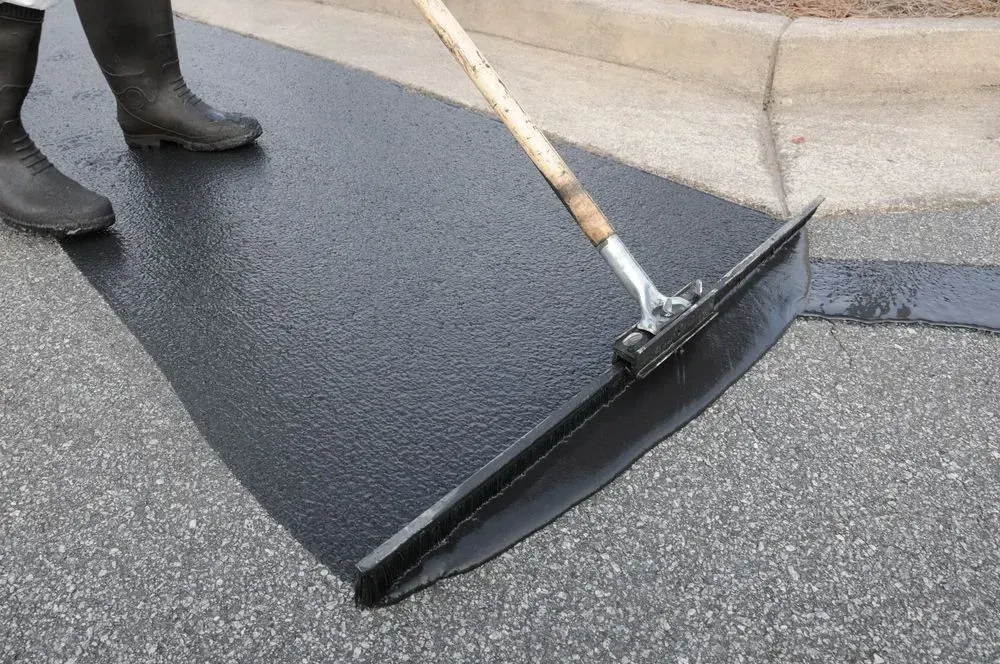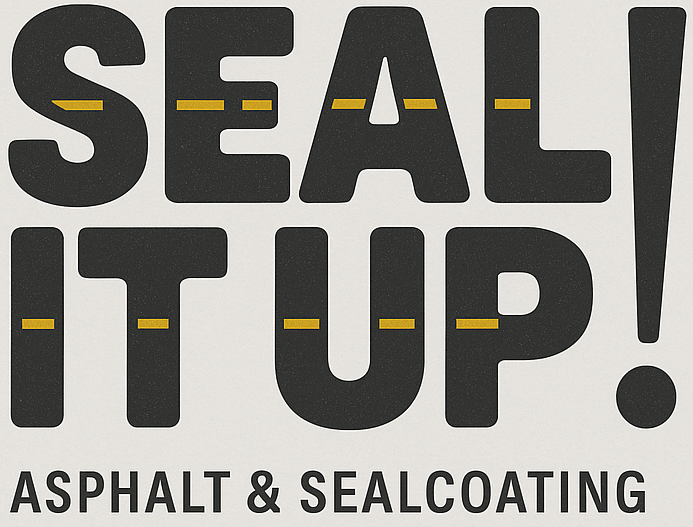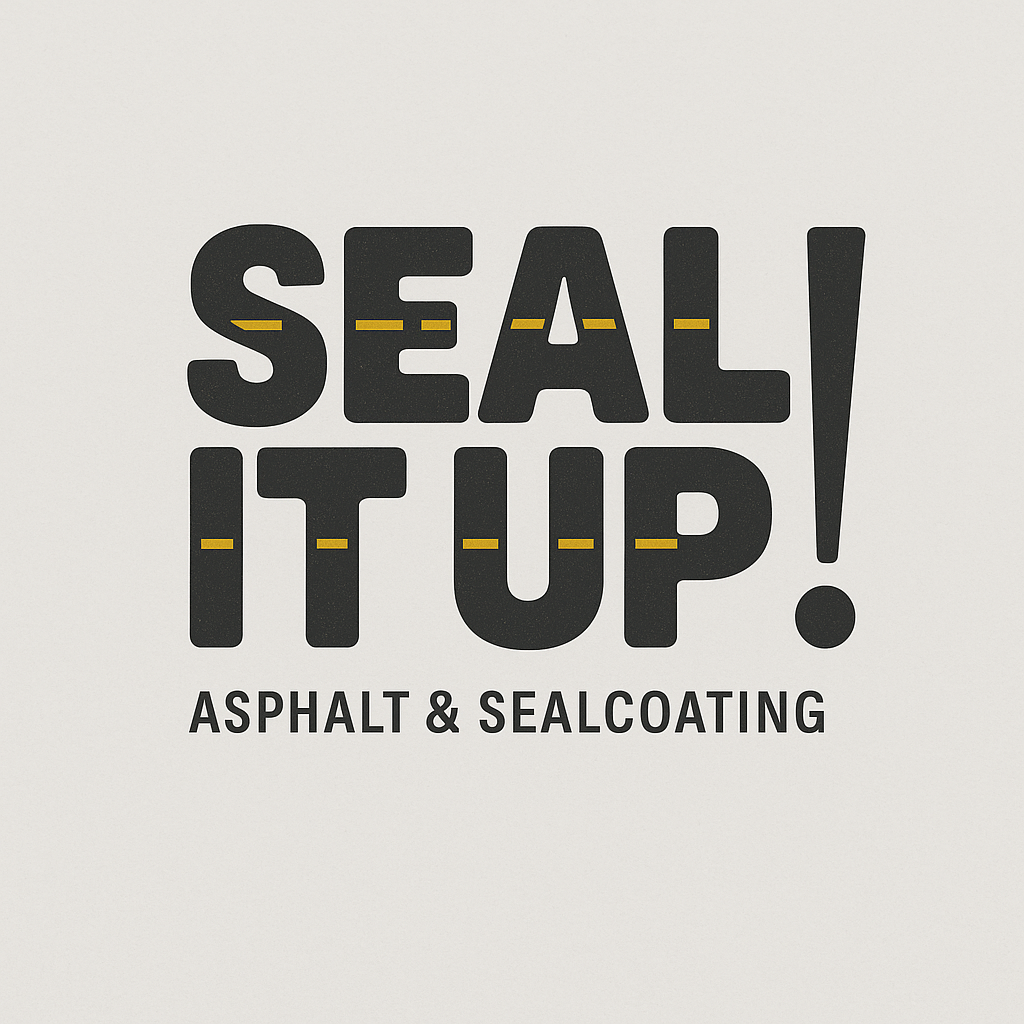Sealcoating vs. Overlay: What Is the Best Option for Worn Asphalt in Eugene?

Begin With the Pavement’s Condition
Every pavement ages, but the fix should match the problem. Sealcoating preserves a sound surface by blocking water and oxidation. An asphalt overlay restores ride quality and adds structure. In Eugene, rain, cool winters, and tree debris push different stresses than the desert. Understanding local conditions helps you choose confidently.
What Sealcoating Provides
Sealcoating places a protective film over the asphalt to resist water, oxygen, and deicing chemicals.
Ideal Use Cases
- Uniform color fade and light raveling
- Tight, non-working cracks after crack sealing
- Lots that need appearance and protection without major repairs
- Residential driveways that see cars more than trucks
Benefits
- Fresh black finish improves curb appeal and visibility of striping
- Slows oxidation and moisture intrusion in a wet climate
- Cost effective maintenance that extends service life
Limits
Sealcoating cannot bridge wide cracks, correct birdbaths, or fix base failures. If the pavement flexes or pumps under load, you need more than sealer.
What an Overlay Adds
An overlay installs new hot mix to strengthen the surface and correct ride.
Ideal Use Cases
- Moderate alligator cracking that has not reached the base
- Longitudinal cracks and wheelpath wear from repeated wet loading
- Depressions and minor ponding that need profile correction
- Facilities that require improvement without a full reconstruction
Benefits
- Structural boost with a smooth, clean driving surface
- Better drainage and fewer slip hazards in wet months
- Long service life when paired with crack sealing and future sealcoats
Limits
Overlays do not fix saturated or unstable base layers. Areas with pumping fines, chronic standing water, or root upheaval need patching or base repair first.
Pacific Northwest Climate Factors
Rain and Drainage
Frequent rain means water is the number one enemy. Sealcoating helps close surface voids. Overlays can reestablish slope to move water to inlets and gutters.
Freeze Thaw and Shaded Areas
Shaded pavements hold moisture longer. Freeze thaw cycles open cracks and loosen aggregates. Crack sealing plus a timely sealcoat prevents water from getting deeper.
Organics and Staining
Leaves and needles hold moisture and create staining. A smooth, sealed surface is easier to clean and less likely to grow moss.
Inspection Framework We Use On Site
- Document crack types and density.
- Check for movement or pumping that signals base issues.
- Evaluate drainage, curb reveal, and tie-ins to structures.
- Choose the right solution.
- Preventive maintenance: sealcoating after crack repairs.
- Surface rehab: overlay with selective milling.
- Structural failure: base repair and paving before any surface treatment.
Cost, Schedule, and Performance
- Sealcoating: Lowest upfront cost, fast cure in warm, dry windows. Best applied during stable weather. Reapply on a schedule to keep water out.
- Overlay: More investment and planning, but lifts performance and resets the maintenance cycle. Expect lane closures and staging around access needs.
- Smart plan: After an overlay, schedule crack sealing and future sealcoats to protect your upgrade.
Common Scenarios We See in Lane County
School Lot With Widespread Fading
Structure is solid, but color and fine raveling reduce striping visibility. Recommendation: crack seal, two coats of sealer, and restripe for safety.
Office Park With Ponding Near Catch Basins
Surface has settled and holds water after storms. Recommendation: mill to correct grade, install overlay, then sealcoat in the next cycle.
Driveway With Alligator Cracking in Tire Paths
Repeated wet loads and weak base caused cracked panels. Recommendation: remove and replace failed areas, then overlay or repave as needed.
Why Choose Seal It Up! in the Eugene Area
We provide pavement preservation and repair across Eugene, Springfield, and greater Lane County.
- Sealcoating for moisture defense and clean appearance
- Chip seal, crack and pothole repair to halt progressive damage
- Asphalt paving and overlays to restore ride and structure
Parking lot and line striping for safe traffic flow and ADA clarity
Sealcoat FAQs
Does sealcoating stop water from getting into cracks?
It helps seal the surface, but open cracks must be filled first. Crack sealing and patching come before sealcoating.
Will an overlay raise my lot above curbs?
It can. We review curb reveal and door thresholds. Milling may be required to maintain proper drainage and access.
How often should I sealcoat in Eugene?
Many properties benefit from a 3 to 4 year cycle, adjusted for traffic, shade, and moisture exposure.
Ready to Extend Your Pavement’s Life?
Schedule an on site review with
Seal It Up!
We will assess your lot, explain findings, and deliver a plan that may include crack repair, sealcoating, overlay, or a combination. Serving Eugene, Springfield, and all of Lane County with durable, cost effective solutions.

